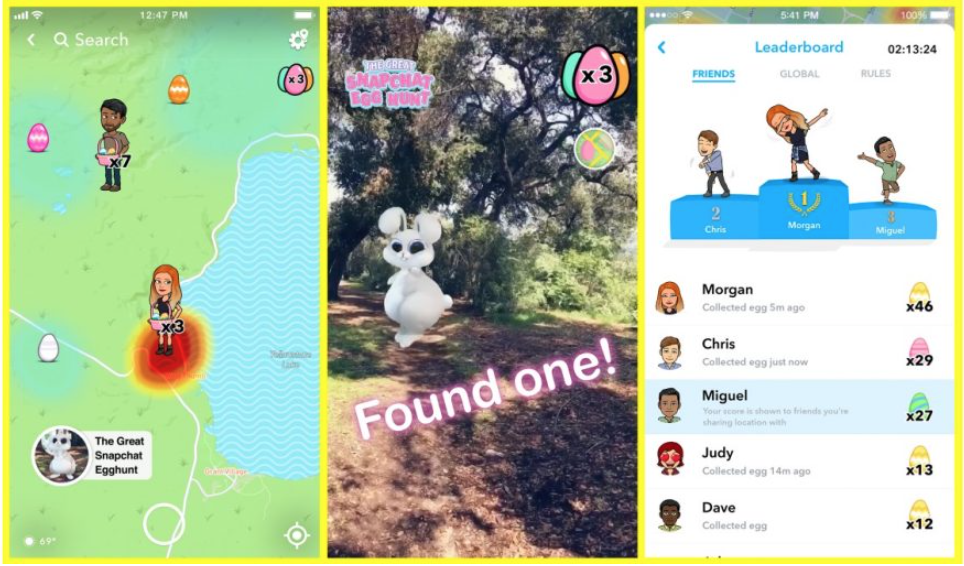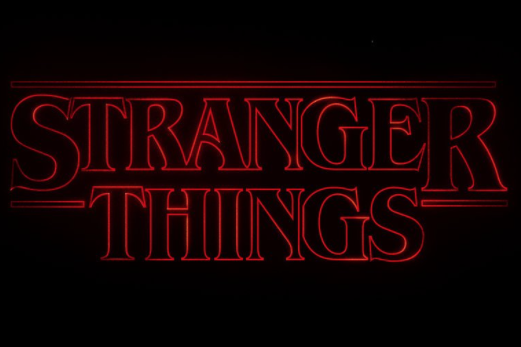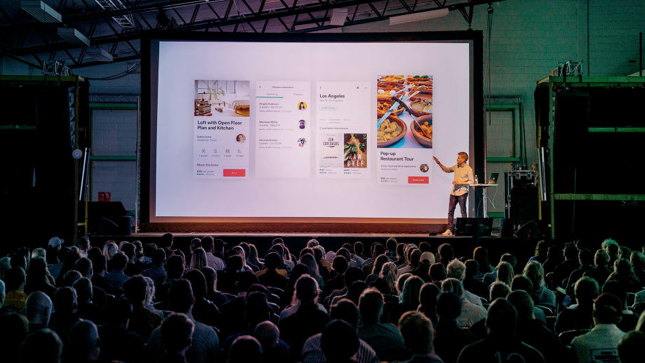
Interesting Reads. Industry news that you may have missed.
The Great Snapchat Egg Hunt in Augmented Reality Is Under Way – Adweek
Last weekend, Snapchat introduced The Great Snapchat Egg Hunt, a Snap Map-based game that allowed users to collect eggs throughout April Fools’ Day. Within the app, users saw decorated eggs that were “hidden” in their Snap Maps at various public locations. More than one million eggs were hidden, and once found, users could tap the eggs opening 3D World Lenses to collect points. Snap Maps displayed users’ scores, rankings among their friends and rankings among the global Snapchat community.

Gothic or Helvetica? For Brands, Fonts Help Tell a Story – The New York Times
Fonts have long been used as a marketing trick for brands, especially in Hollywood. Movie studios strategically choose fonts, colors, and lighting for a film that will reflect its tone and genre. For example, the retro typeface titling “Stranger Things” has gained popularity online. In a crowded marketplace, mainstream consumer brands such as Southwest Airlines and Domino’s Pizza, are finding it even more pertinent to place focus on fonts as a critical part of its marketing.

How To Design An Emotionally Intelligent PowerPoint Presentation – Fast Company
When the topic of PowerPoint comes up in a work conversation, it’s likely that colleagues will have a strong opinion – good or bad. PowerPoints aren’t going away anytime soon, so understanding how to create a compelling presentation that resonates with your audience is vital in your professional career. PowerPoint isn’t about eye-catching graphics or the type of software; it’s about the story reaching and staying with your audience’s needs.

Virtual Reality, Now With the Sense of Touch – The Wall Street Journal
In the new film, ‘Ready Player One,’ the future portrayed is closer than you think. Startups are developing haptic gloves and suits that let VR users feel virtual worlds. Haptic technologies use force, motion, and vibrations to simulate the feelings of a virtual object, similar to pulsing feedback found in fitness bands, smartphones, and video-game controllers. Until now, adding the sensation of touch to VR seemed unimaginable. Experts expect these devices to influence a variety of industries such as healthcare and interior design.






